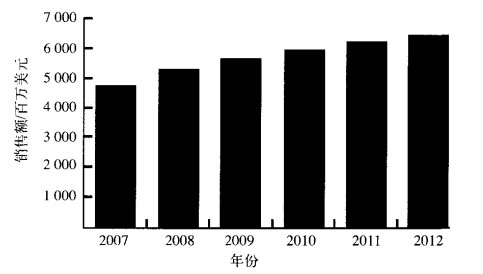


Unfortunately, in the first quarter of 2008, while demand for control valves was high in developing markets such as China, India and the Middle East, which are dominated by the oil and gas industry, revenue growth for control valve suppliers began to slow in North America and Europe.
In 2008, Mr. Clayton noted that while the current global control valve market has strong growth opportunities, challenges remain. In many ways, control valve suppliers are facing the same opportunities and challenges as before. The strong growth of markets in developing countries and regions provides control valve suppliers with an excellent opportunity to expand their business, but at the same time, how to establish a global supply and logistics system, how to develop new products and what kind of new products are the difficulties that control valve suppliers need to face and overcome. For example, in many new petrochemical projects, large control valves are required to withstand extreme temperature conditions and provide tight shut-off functions; In deepwater oil operations, high-pressure control valves are required to provide effective opening thrust or sufficient torque.
In addition, with the continuous improvement of modern production process automation, process parameters have become an important indicator to judge the efficiency of the production process, working conditions and economic performance, control valve in continuous and discrete control, energy metering, trade settlement and storage and transportation systems increasingly prominent role. Accurate control of the control valve, multi-function, intelligent requirements are becoming higher and higher.
In 2007, a bright spot in the development of automation industry is the rise of wireless communication in industrial automation factory application, wireless communication technology remote, mobile, anytime and anywhere control advantage makes the original control of the line dwarfish. Therefore, control valve suppliers on the one hand actively develop DTMs (DigitalTV Monitor System), In order to work with the data embedding diversified intelligent field equipment designed based on FDT (Formal Description Technique) PAM (Pulse Amplitude Modulation) solution; On the other hand, control valve suppliers are considering developing wireless HART (Highway Addressable Remote Transducer) products.
In 2008, due to the strong growth of the control valve market in developing countries, control valve suppliers strive to extend their manufacturing capacity to meet customer needs, and the control valve market continues to grow. In sharp contrast to 2008, due to the impact of the financial crisis, in 2009, control valve suppliers declined sharply, control valve orders reduced. In the third quarter of 2009, Mr. Clayton remained optimistic that the global control valve market is expected to rebound in 2011.
Affected by the current global economic recession, the development trend of the global control valve market has undergone great changes. Over the past four years, companies that are more aggressive and pursue new business have grown faster, benefiting from the rapid growth of the market. Despite the recession, many control valve suppliers once again find themselves in a market full of opportunities and less competition. Therefore, the control valve suppliers can go out and obtain new business is very important to expand, while retaining the existing user base will be more important than ever.
In the past few years, the explosive growth of the control valve market led to a sharp increase in control valve suppliers' hand-held orders and increased production to meet the market demand. However, in 2009, under the circumstances of economic recession and declining shipments, control valve suppliers had a large backlog of inventory. Leading valve suppliers maintain healthy inventory levels and work off excess inventory as quickly as possible as valve sales and service orders grow. However, due to the inherent complexity of the distribution chain and the long periodicity of orders, these backlogs are difficult to work off in a short time.
In the face of the global economic downturn, Mr. Clayton emphasized that the oil and related industrial markets remain the growth of the control valve; Developing economies remain the engine of growth in the global control valve market. Developing countries such as China, India and Brazil have also been affected by the global economic crisis, but their economic growth rates are still very high compared to other countries, still at 2008 levels. Developing economies are still the main growth drivers for the global control valve market. Emerging economies such as bric countries (Brazil, Russia, India and China), as well as the Middle East and Eastern Europe, will continue to support the growing market for control valves.
The global control valve market needs to find demand from the growing global consumption, which depends on a healthy capital investment and credit environment, solid market returns and intensive production demand. Only in this way will control valve suppliers be able to cope with the coming rapid growth in energy demand and consumer demand in the control valve market around the world.